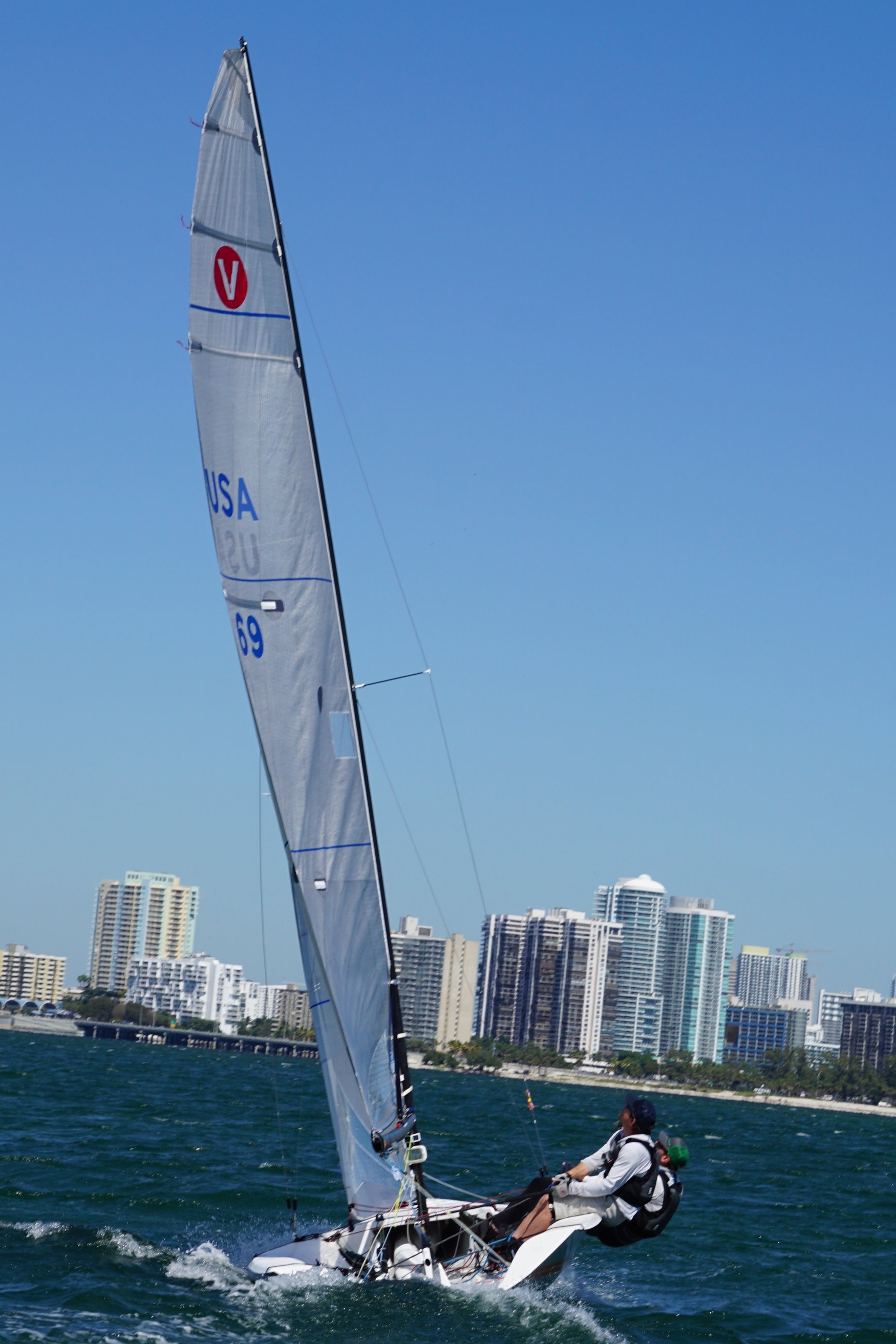Today was day one in a charter boat, and the last day before racing starts, so the priority was on dialing in the setup, shaking down the rigging, and ensuring that the team was ready to go for racing tomorrow. The following debrief hits on a few key points for performance this week, but also incorporates some ideas for longer term technique development.
Settings Progression
What was the settings progression throughout the day?
Thoughts on lowers: The wires pull from just under the spreaders, well above the vang, making this largely a lateral mast bend tool more than a fore/aft mast bend tool. See Mast Tip photos above.
General setup thoughts: Setup progression went well - as you got the rig dialed things started looking balanced, and the boat seemed to respond well in the pressure. I think that the three main places to make gains at this stage are in getting the jib shape to be more twisty to match the main, making the main more twisty if you need a bow down mode in the chop, and in getting the weight more involved both upwind and downwind. By pressing your weight more when the boat enters puffs upwind and downwind, you’ll help it accelerate, build apparent, and help Geoff not have to steer as much.
Local Knowledge
Rule of thumb: From the northerly direction, if the wind is left of the city, left is likely strong due to convergence off of the shoreline. If wind is right of the city, fairly open race course - know your angles, and win your side. The following video is pretty rambling, but Auggie Diaz is probably one of the best sources of local knowledge in Miami.
Around 3:00 he talks about the direction that we will likely see tomorrow.
Around 7:00 he talks about the direction that we saw today.
From a velocity standpoint, the GFS model is usually the most reliable in Miami. Looking like 10-15 tomorrow and possibly Friday.
Who will call tactics?
Downwind Thoughts
As we got down the course into more breeze, weight movement got better, and speed seemed good. I think that in general, being more active with weight will allow you to steer less, and build more apparent wind, even in the moderate wind strengths.
Nail your vang mark downwind. Important to look at leech dynamics - you want the battens to flick one after another - not all together as a hinge (too tight on vang) and not totally unrelated to each other (too loose on vang).
Shorten tack line knot?
Gybing: Work on gybing more rudderlessly. The following photos are a really good example of what often went wrong in the gybes. Initially, the heel in the entry was really good, but then half way through the gybe, everyone starts crossing and boat heels to the old leeward side before sails have crossed, meaning the rudder has to work harder to turn the boat and the boat slows down a lot. Key is either speeding up the turn slightly, or slowing down weight movement. Turn has to be in sync with sails, which cross fairly slowly, so it’s likely that the answer is to keep weight up on the old side longer.












